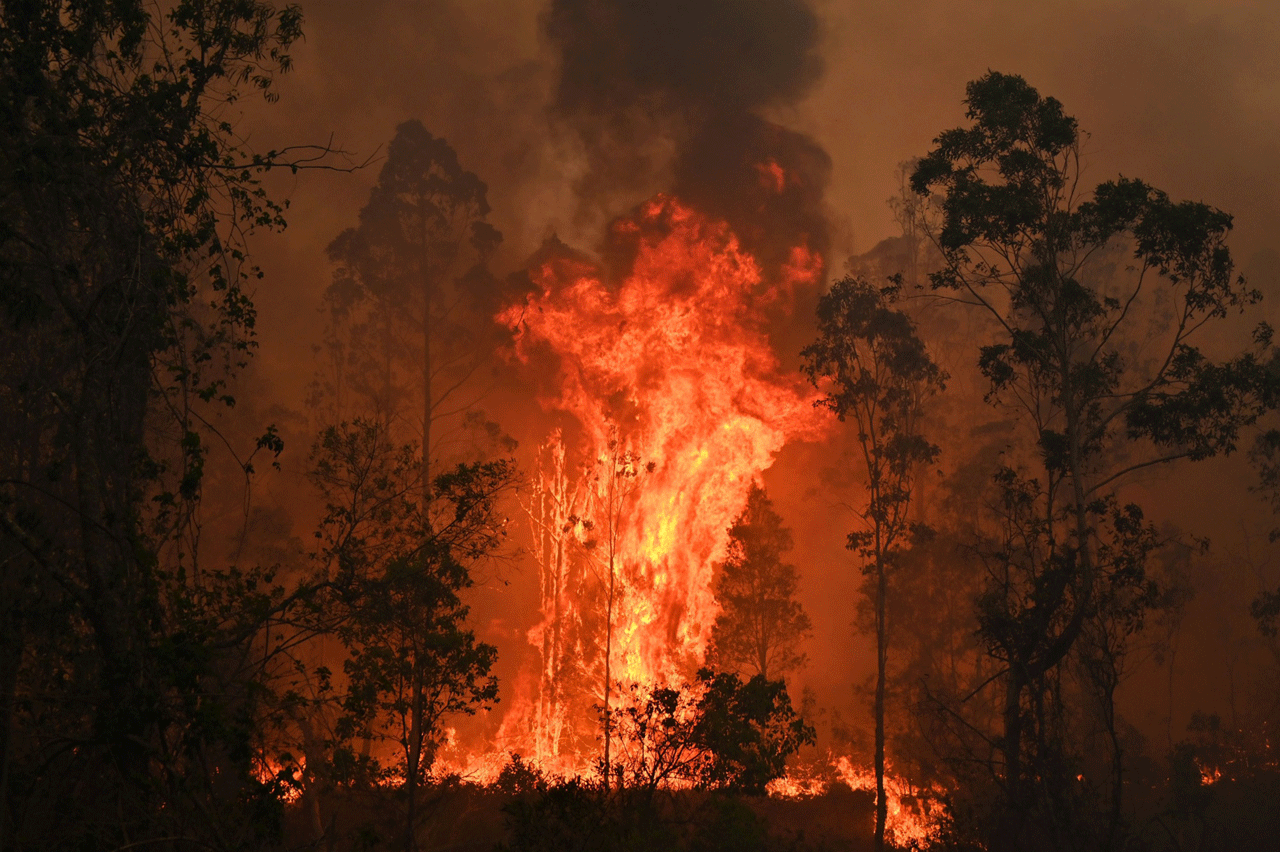
A bushfire blazes in the night in Australia. – AFP file photo
IT has now been confirmed by national meteorological agencies worldwide that the past decade was the warmest on record since records were first kept in 1850. Last year was the second warmest year, without a strong El Nino effect. Only 2016 was a warmer year when temperatures were boosted by a strong El Nino, which has the habit of boosting temperatures worldwide.
The Australian Bureau of Meteorology has advocated that 2019 was the warmest and driest year ever recorded there. The effects of the weather in Australia have figured highly in the global media since September 2019 without perhaps adequate explanations.
The scenario
Almost daily, since September 2019 until the second week in February 2020, we have witnessed in TV news items, shots of the raging wild fires burning across the savannah grasslands and forests of southern and south eastern Australia. It is estimated that more than 10 billion ha have been burnt to cinders, with the deaths of over 30 people, and over one billion animals and nearly 3,000 homes destroyed.
In this column, I shall attempt to provide a brief summary of the meteorological events contributing to the recent extreme heat and drought in Australia and relate these to climate change. It is perhaps interesting that in talking to Malaysian friends from Sarawak, who spent last Christmas with their relatives in Australia, they remarked that the high ambient air temperatures of over 40 degrees Celsius in such low relative humidity of less than 20 per cent were almost unbearable. Their skin felt remarkably dry and itchy.
Fuel, ignition, and weather conditions
Much of the scrubland is of grass interspersed with eucalyptus and other resinous tree-types, which dry out easily in the baking heat. Such ‘dead’ vegetation easily burns and allows fire to rapidly spread. Many of the Australian fires are ignited by lightning strikes, whilst some were manmade either accidentally or deliberately. Much of Australia has seen elongated periods of excessive drought, exacerbating matters through high temperatures and low humidity. The high evaporation rates promote faster drying of the fuel. High winds enable the fire to spread faster and, indeed, fire itself creates its own winds.
With inevitably higher temperatures generated by the flames, low pressure is established in the inferno with lower temperatures and higher pressure in the unfired surroundings. Air is thus sucked into the low pressure area and, with great temperature contrasts between the fired area and the surrounding unignited countryside, the pressure gradient between these two extremes is very steep, hence the fast winds which fan the flames.

Floodwaters rush over the Aplins Weir in Townsville, Queensland after days of torrential rain. – AFP file photo.
In Australia, weather conditions are routinely categorised by the McArthur Forest Fire Danger Index (FFDI) which represents the level of risk of a fire spreading and becoming severe once lit.
 Recent years, in New South Wales, Victoria and South Australia, have seen an increasing trend towards a greater number of very high fire weather days in the Spring months of September, October, and November.
Recent years, in New South Wales, Victoria and South Australia, have seen an increasing trend towards a greater number of very high fire weather days in the Spring months of September, October, and November.
Recent Australian weather conditions
These have been largely affected by the pattern of sea surface temperatures in the western equatorial Pacific and Indian oceans leading to a significant warming of the stratosphere. Clearly the relationship between the oceans and the atmosphere above is well demonstrated in the drier than once normal weather conditions in the southern Australian states. Already, we know that globally more frequent heat-waves are being experienced through climate change, thus leading to significantly longer fire seasons not only across Australia but also in southern Europe and the western USA.
Interestingly, it is forecast that in May this year, the atmospheric concentration of carbon dioxide will peak at 417 ppm (parts per million) rising by 2.74 ppm since last year. The emissions from the Australian bushfires will contribute to 20 per cent of this increase. Hotter, drier weather will play an increasing role in the severity of bush and forest fires in the years ahead.
And suddenly the heavens opened …
The first week of last month saw the bushfires creeping ever closer to the northern suburbs of Sydney with orders to evacuate houses in a few areas. The second week of last month saw two and half days of intensive, persistent rainfall causing one reservoir, only one third full the week before, suddenly spilling over the top of its dam. Sydney received such intensive rainfall in those 2.5 days to equal the sum total of its rainfall over the previous drought stricken three years. With such an urban sprawl of tarmac and concrete, it was inevitable that the drainage system could not cope with such a volume of water and flash flooding resulted.
Sustained rainfall was badly needed in rural areas for the water to infiltrate the near baked soil and increase river levels. The flip side of the coin saw the bush and forest fires truly doused but with so much vegetation burnt away the bare landscape is now prone to landslides and soil erosion on a massive scale. The last three years of drought will need more persistent rain for the millions of hectares of burnt out land to recover its once carpet-like vegetation cover. Once rescued from the threat of flames the inhabitants of some areas have since been rescued from floodwaters. Such seemingly abnormal events are but precursors for several decades to come.
